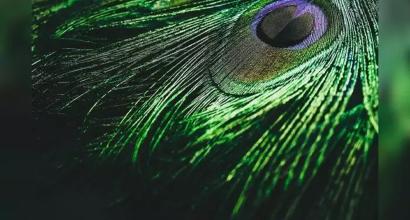In the characters of Queen Dhāriṇī and Irāvatī, we can see the abhinaya of mature and experienced women; there is a difference of flavour in them. Dhāriṇī is the queen and she carries herself with the kind of dignity and majesty expected of the royalty; Irāvatī is probably younger to Dhāriṇī; she is, in a sense, inferior to the queen in the profundity and seriousness of character; she gives herself to pleasure, jealousy, and anger. It appears like Dhāriṇī had kept Mālavikā in prison only to please Irāvatī. When vidūṣaka comes to her claiming to have been bitten by a snake, the queen, out of compassion gives him the nāga-mudrikā; if Irāvatī were to be in her place, she would have thought ten times before coming forward to perform such an act. In the first act, Dhāriṇī appears to have surmised the king’s intentions when she gets to know that he has arranged for a presentation of dance performances; out of her own good nature and a sense of obligation, she cannot but let her husband go ahead with his idea. Irāvatī, on the other hand, does not like the idea of the presentation and she makes her opinion known to the king. Thus, there is enough scope for enacting ego, arrogance, anger, firmness, obligation, generosity, and maturity in the play. Therefore, one can see holistic abhinaya of śṛṅgāra in this play.
Agnimitra and vidūṣaka are the most important male characters. There is ample scope for vidūṣaka’s abhinaya; his hunger, foolishness, and skill in bringing humour at all instances do not fail to tickle the bones of the audience. The king’s characteristics lie somewhere in between those of a dhīrodātta and dhīralalita nayaka. His personality goes well with vidūṣaka’s words, sūnoparicaro vihaṅgama ivābhiṣalolupo bhīrukaśca (Act 2). It is also likely that he was like īśa, who is described in the maṅgala-śloka; he probably was a praṇata-bahuphala, i.e., a person who was a great benefactor to those who came to him; he had ensured that his people led a more comfortable life than him. Though he was interested in women, he was aviṣaya-manaska, i.e., not a materialistic person. The poet, perhaps, intends to suggest the qualities of Agnimitra through the nāndī-padya of the play. Duṣyanta also shares similar qualities.
The play Mālavikāgnimitram is composed by stitching together two story-strands; one relates to the story of the hero and the other to the heroine. The poet has displayed great skill in creating a situation where the two dance teachers, Haradatta and Gaṇadāsa, are in discord; this leads to the queen herself allowing for the showcase of the dance presentations. Only Mālavikā’s dance is staged and the poet puts off the presentation of Haradatta’s student. The play begins and ends like a modern-day novel. It starts by kindling curiosity and showcases an instance of uncertainties; the characters encounter obstacles in achieving their goal; towards the end, all the impediments get removed and problems get resolved leading to amazement. It ends on a happy note. The flow of the story is interrupted by the coming of a monkey, a doctor, and a pain in the legs; it then flows ahead, completes a full circle, and finds completion.
The poet has thought out his words and expressions well; he has put efforts in sculpting his language. There are many phrases, sentences, and verses in the play that are worth quoting. The following are a few –
purāṇam-ityeva na sādhu sarvaṃ
na cāpi kāvyaṃ navam-ityavadyam|
santaḥ parīkṣyānyatarad-bhajante
mūḍhaḥ parapratyayaneya-buddhiḥ|| (Prastāvanā)
All that is old is not necessarily gold; a work need not be brushed aside merely because it is new. The noble ones may examine with their keen eye and choose one or the other; the blockhead has his judgement guided by the opinion of the others.
Devānām-idam-āmananti munayaḥ kāntaṃ kratuṃ cākṣuṣaṃ
rudreṇedam-umā-kṛta-vyatikare svāṅge vibhaktaṃ dvidhā |
traiguṇyodbhavam-atra loka-caritaṃ nānā-rasaṃ dṛśyate
nāṭyaṃ bhinna-rucerjanasya bahudhāpyekaṃ samārādhanam || 1.5
Sages regard this (nāṭya) as a visual yajna to the eyes of the devas; it was divided by Rudra in two flavours (uddhata and sukumāra) in his own body, that is blended with Umā; herein is captured the lives of human arising from the three guṇas – sattva, rajas, and tamas and evokes various rasas; nāṭya – theatre art is the only mode of entertainment to people of varied tastes.
To be continued ...
The current series of articles is an enlarged adaption of Prof. A. R. Krishnasastri's Kannada treatise Saṃskṛta-nāṭaka. They are presented along with additional information and footnotes by Arjun Bharadwaj.











































